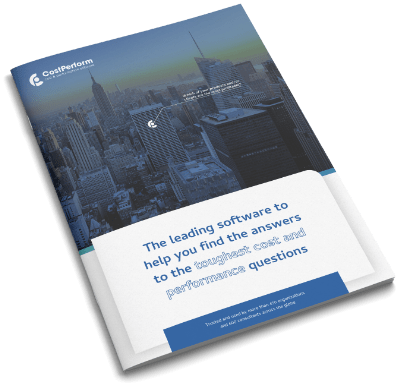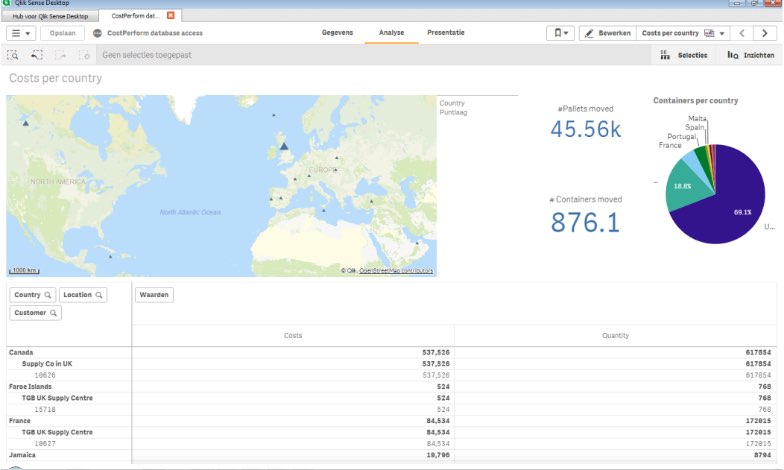CostPerforms adds value to your BI Environment with cost analysis software
BI tools like SAP, Cognos, Business objects, Oracle Business Intelligence, QlikView and even the pivot table functionality in MS Excel are excellent tools to transfer rough (primary) data into information that managers need to act. But how to decide on your product, market, client and country mix of sales if you miss crucial information which was never keyed in your primary systems? The decision to improve your mix of output needs a better understanding of the true costs and net margin of your dimensions. Cost analysis software can help you with this.
Why you need good cost analysis software
Although BI tools are excellent in slicing and dicing transactional data from operations, they can only work with available operational data or facts like invoices, line revenue & amount sold etc. If you don’t have cost analysis software in place, your P&L probably only shows gross margin with additional indirect and overhead allocations. So what, you might think?
Well, gross margin isn’t a good indicator of the financial performance if your indirect costs are a substantial percentage of your cost base.
A P&L based on net margin provides a better insight in the real performance of dimensions, which can be achieved using cost analysis software. Why? If you only look at the gross margin, you can conclude that products are either profitable or not profitable. However, if you allocate the indirect costs more precisely, using cause and effect logic, products that seemed profitable could show up as actually unprofitable. But there is more.
A P&L based on gross margin and direct costs alone can show that a manager is in trouble. Without a cost model, the P&L doesn’t tell the manager what is causing the trouble. The manager looks in the primary systems for ‘unit costs per product’, in order to compare unit costs with the sales price. Unfortunately, unit costs are never a figure that is ‘just keyed in’. Unit costs are always a result of a calculation based on some logic of ‘what drives costs’ or assumptions made by stakeholders. Cost analysis software offers more clarity.
A P&L based on net margin provides a better insight in the real performance of dimensions, which can be achieved using cost analysis software.
“But we have an ERP system, we don’t need cost analysis software”
Some organizations might do their costing in their ERP system. Wherever an invoice is booked in the ERP system, the person to key it in must make decisions to “label” it. Unfortunately, most invoices do not have a clear link to products or other dimensions. For example, how to label the yearly invoice of the insurance, how to label the energy bill and how to label the board’s salary costs? Even direct cost such as manufacturing and distribution functions do not have to have a relation to products at the transactional level. Other dimensions might cause these costs to happen. Here’s where cost analysis software comes in. Optimal cost analysis software helps to allocate these correctly.
Better calculations await with cost analysis software
In order to get the right net margin information, you need to add more intelligence to your dataset. The answer: cost analysis software. Use specialized CostPerform cost analysis software that records and calculates your intelligence on cause and effect between output and required (costs) input.

